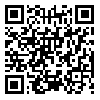Volume 9, Issue 2 (10-2017)
2017, 9(2): 147-157 |
Back to browse issues page
Download citation:
BibTeX | RIS | EndNote | Medlars | ProCite | Reference Manager | RefWorks
Send citation to:



BibTeX | RIS | EndNote | Medlars | ProCite | Reference Manager | RefWorks
Send citation to:
Ramezani N, Gaiini A, CHoobineh S, Kordi M, Baesi K. The Effect of resistance training on serum levels of RBP-4 and insulin resistance index in type 2 diabetic male rats. North Khorasan University of Medical Sciences 2017; 9 (2) :147-157
URL: http://journal.nkums.ac.ir/article-1-1195-en.html
URL: http://journal.nkums.ac.ir/article-1-1195-en.html
1- PhD student, sport physiology group, faculty of physical education and sport sciences, university of Tehran, Tehran, Iran. , nasrinramezany49@yahoo.com
2- professor, sport physiology group, faculty of physical education and sport sciences, university of Tehran, Tehran, Iran.
3- Associate professor, sport physiology group, faculty of physical education and sport sciences, university of Tehran, Tehran, Iran.
4- Associate professor, sport physiology group, faculty of physical education and sport sciences, university of Tehran, Tehran, Iran,
5- Assistant professor, Hepatic and aidsgroup,Pasteur Institute of Iran, Tehran, Iran.
2- professor, sport physiology group, faculty of physical education and sport sciences, university of Tehran, Tehran, Iran.
3- Associate professor, sport physiology group, faculty of physical education and sport sciences, university of Tehran, Tehran, Iran.
4- Associate professor, sport physiology group, faculty of physical education and sport sciences, university of Tehran, Tehran, Iran,
5- Assistant professor, Hepatic and aidsgroup,Pasteur Institute of Iran, Tehran, Iran.
Abstract: (5829 Views)
Background & objectives:Diabetesis one of the most common metabolic diseaseswhich is characterized by hyperglycemia and failure of endogenous insulin.Levels of serum retinol-binding protein 4(RBP4) as an adipokin increase in insulin resistant or type 2 diabetic patientsreferring to its role in regulation of insulin function and glucose metabolism. The present study was designed to investigate the effect of resistance training on serum levels of RBP4 and insulin resistance (IR) index in type II diabetic male wistar rats.
Materials and Methods:Male 8-week-old Wistar rats were randomly assigned as study samples. Diabetes was inducedby intra peritoneal injection nicotinamid and streptozotocin. Five days after injection, blood glucose was measured and the rats with fasting glucose levels between 400-126 mg/dl, were considered as diabetic rats. Based on homogeneous body weight,rats were randomly categorizedinto two control and resistance training groups. Onemonthafter inducing diabetes, rats in the training group carried out an eight-week exercise program on a step ladder, whereas control group remained sedentary in their cages. The levels of the serum glucose, insulin, RBP4, and insulin resistance index (HOMA-IR) wereassessed.
Results:Serum concentration of RBP4[(57/3±9 to 70/9±12)(ng/dl),(p=0/007)], glucose[(234/8±36 to 324/5±16)(mg/dl), (p=0/001)], insulin[(5/5±0/8 to 6/7±0/66)( µmol//l),(p=0/002)], insulin resistance index[(0/3±0/11 to 0/2±0/18)( HOMA-IR), (p=0/002)] were significantly decreased in the training group in comparison with the control group.
Conclusions:The present study showed that resistance training could decrease glucose, insulin, and RBP4 level and improves insulin resistance in rats with type 2 diabetes.Therefore,it seems that this type of training can also be appropriate in patients with type 2 diabetes.
Materials and Methods:Male 8-week-old Wistar rats were randomly assigned as study samples. Diabetes was inducedby intra peritoneal injection nicotinamid and streptozotocin. Five days after injection, blood glucose was measured and the rats with fasting glucose levels between 400-126 mg/dl, were considered as diabetic rats. Based on homogeneous body weight,rats were randomly categorizedinto two control and resistance training groups. Onemonthafter inducing diabetes, rats in the training group carried out an eight-week exercise program on a step ladder, whereas control group remained sedentary in their cages. The levels of the serum glucose, insulin, RBP4, and insulin resistance index (HOMA-IR) wereassessed.
Results:Serum concentration of RBP4[(57/3±9 to 70/9±12)(ng/dl),(p=0/007)], glucose[(234/8±36 to 324/5±16)(mg/dl), (p=0/001)], insulin[(5/5±0/8 to 6/7±0/66)( µmol//l),(p=0/002)], insulin resistance index[(0/3±0/11 to 0/2±0/18)( HOMA-IR), (p=0/002)] were significantly decreased in the training group in comparison with the control group.
Conclusions:The present study showed that resistance training could decrease glucose, insulin, and RBP4 level and improves insulin resistance in rats with type 2 diabetes.Therefore,it seems that this type of training can also be appropriate in patients with type 2 diabetes.
Type of Study: Orginal Research |
Subject:
Basic Sciences
Received: 2017/09/23 | Accepted: 2017/09/23 | Published: 2017/09/23
Received: 2017/09/23 | Accepted: 2017/09/23 | Published: 2017/09/23
Send email to the article author
| Rights and permissions | |
 |
This work is licensed under a Creative Commons Attribution-NonCommercial 4.0 International License. |





